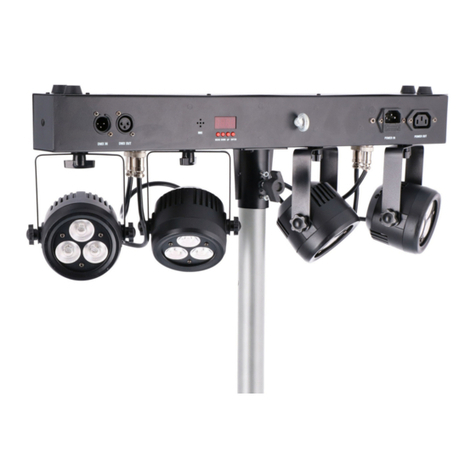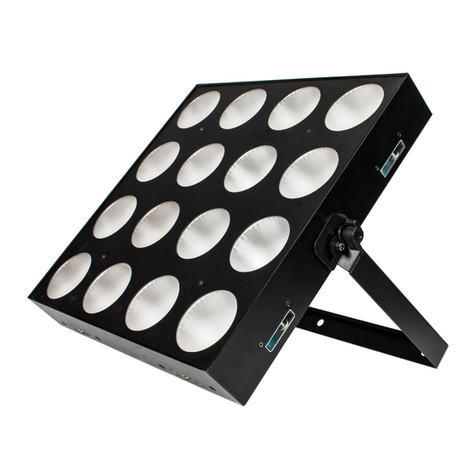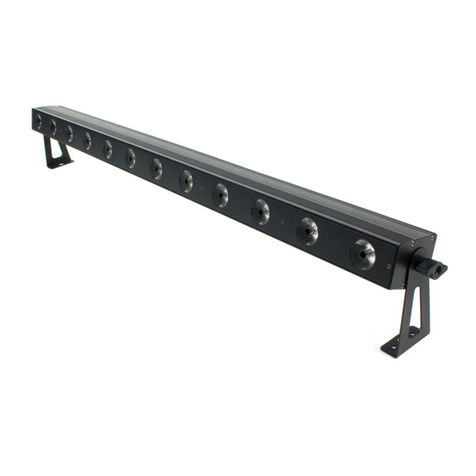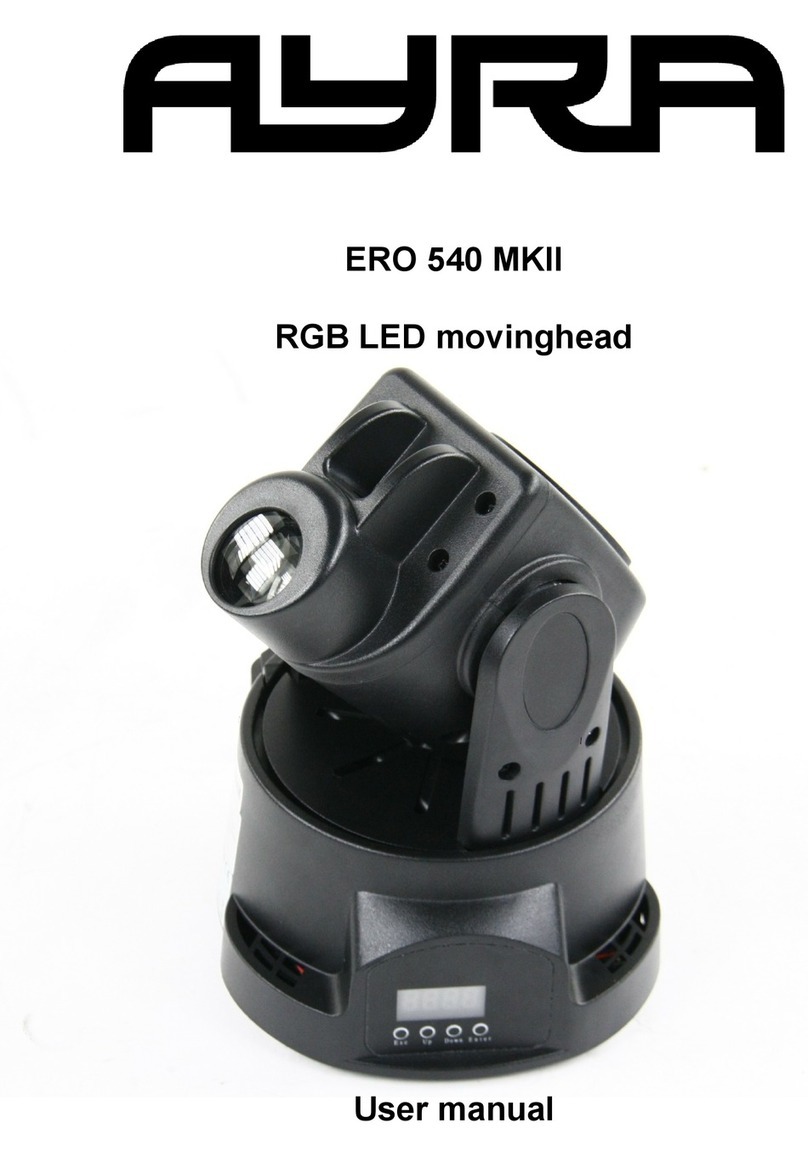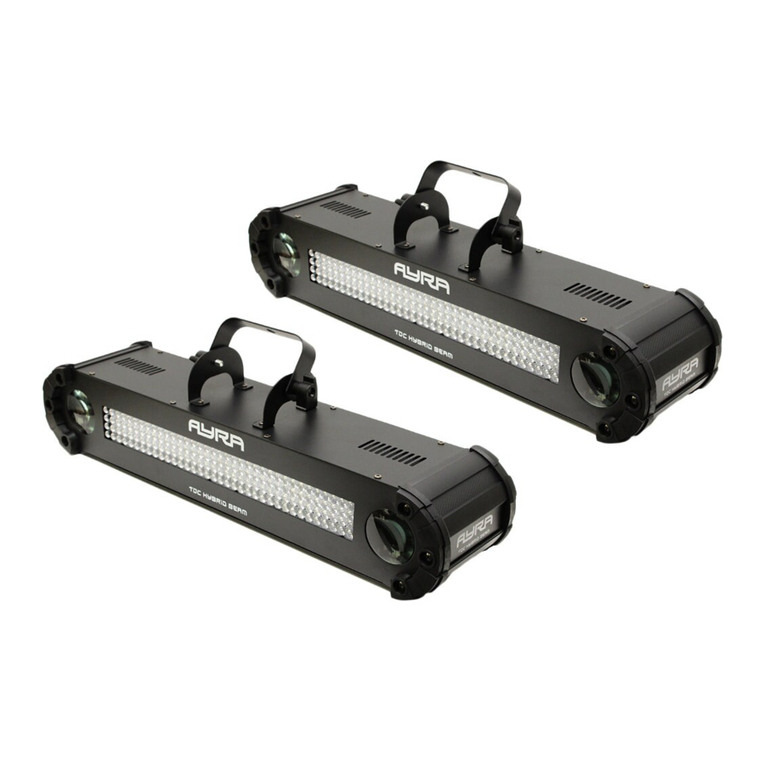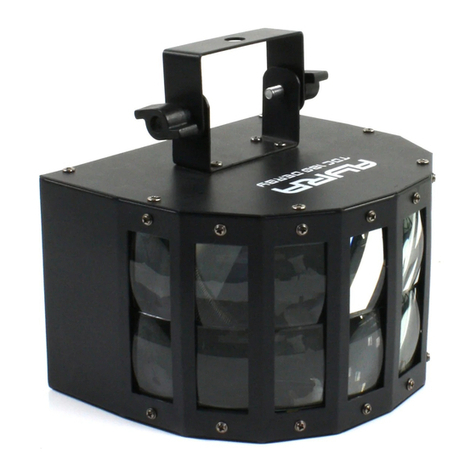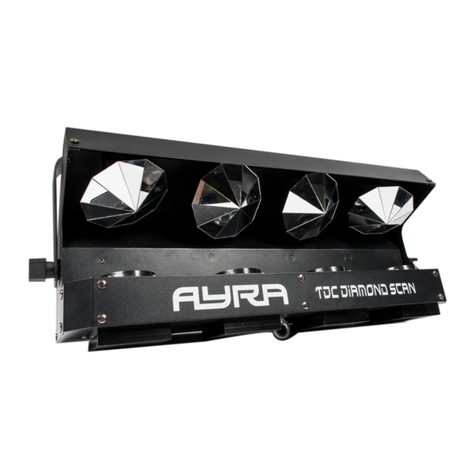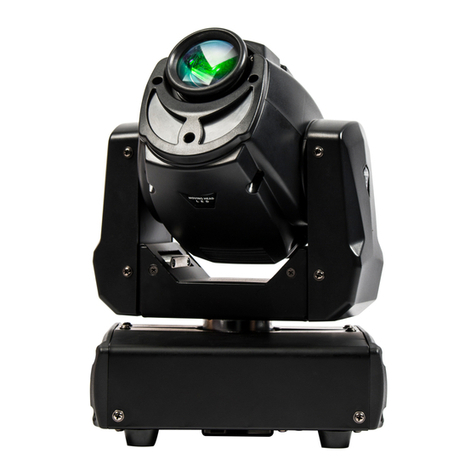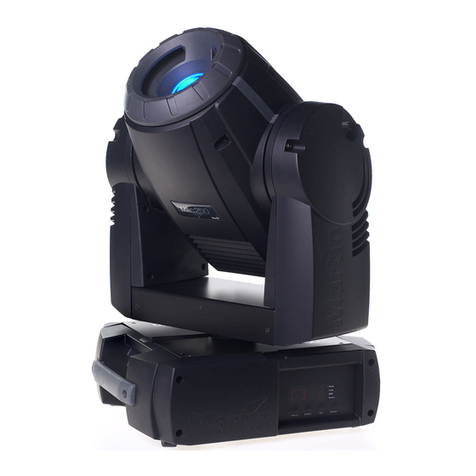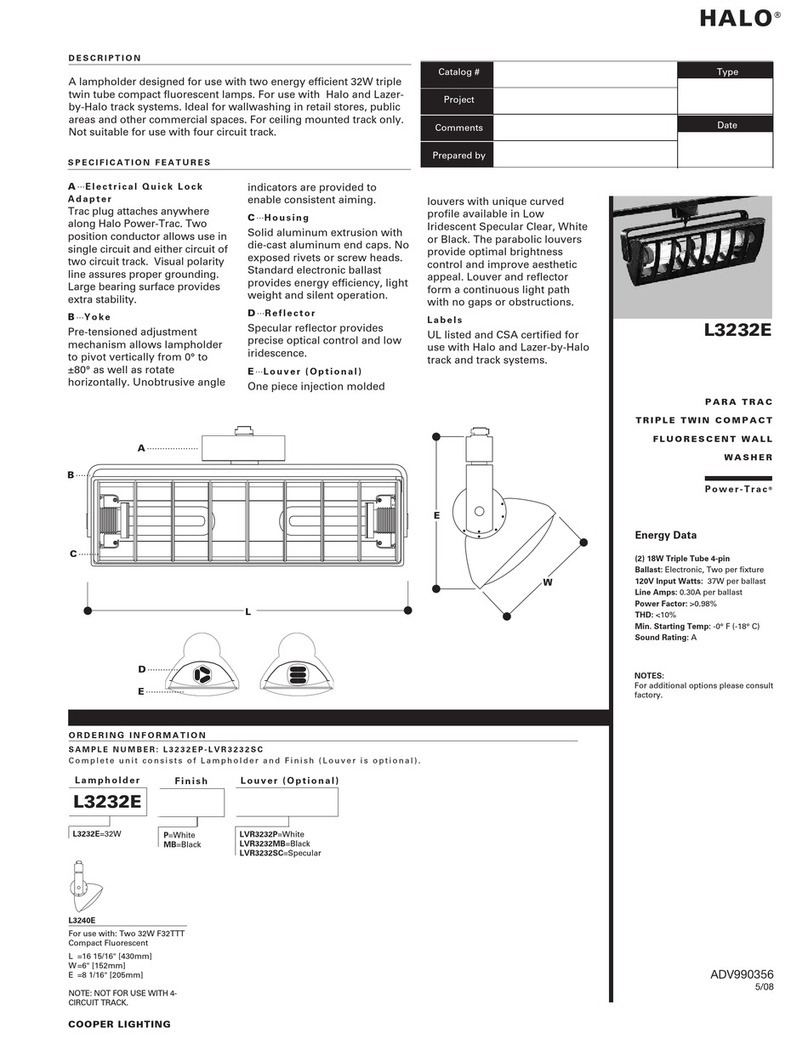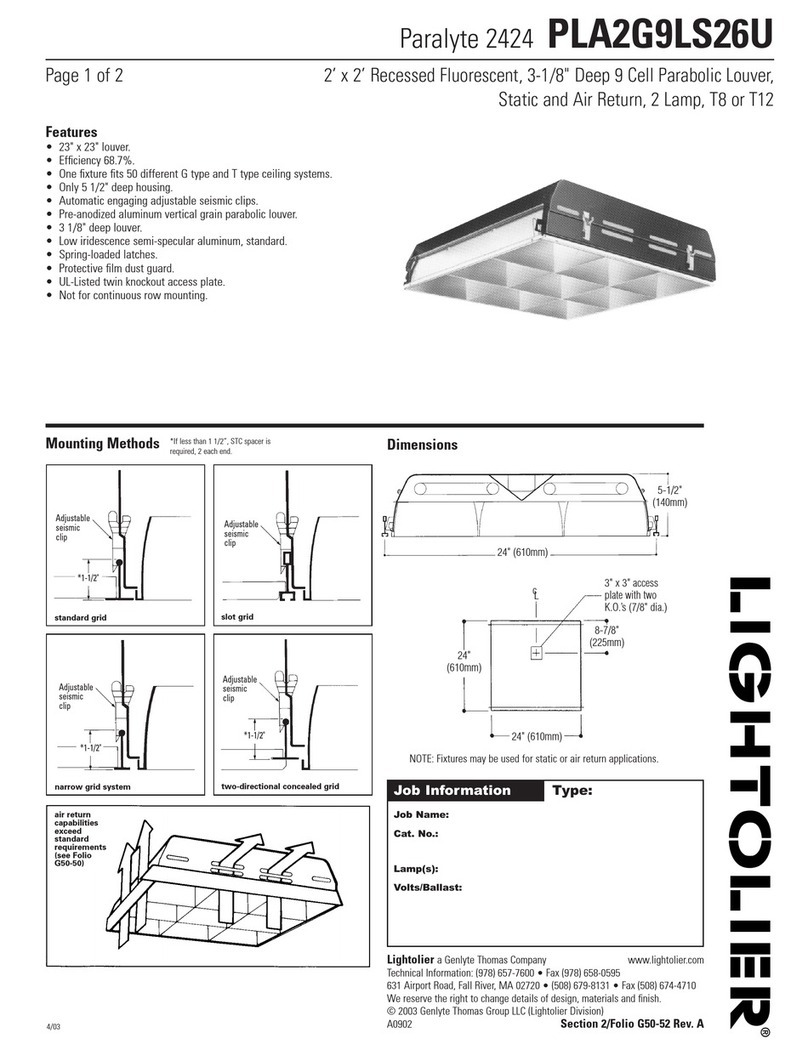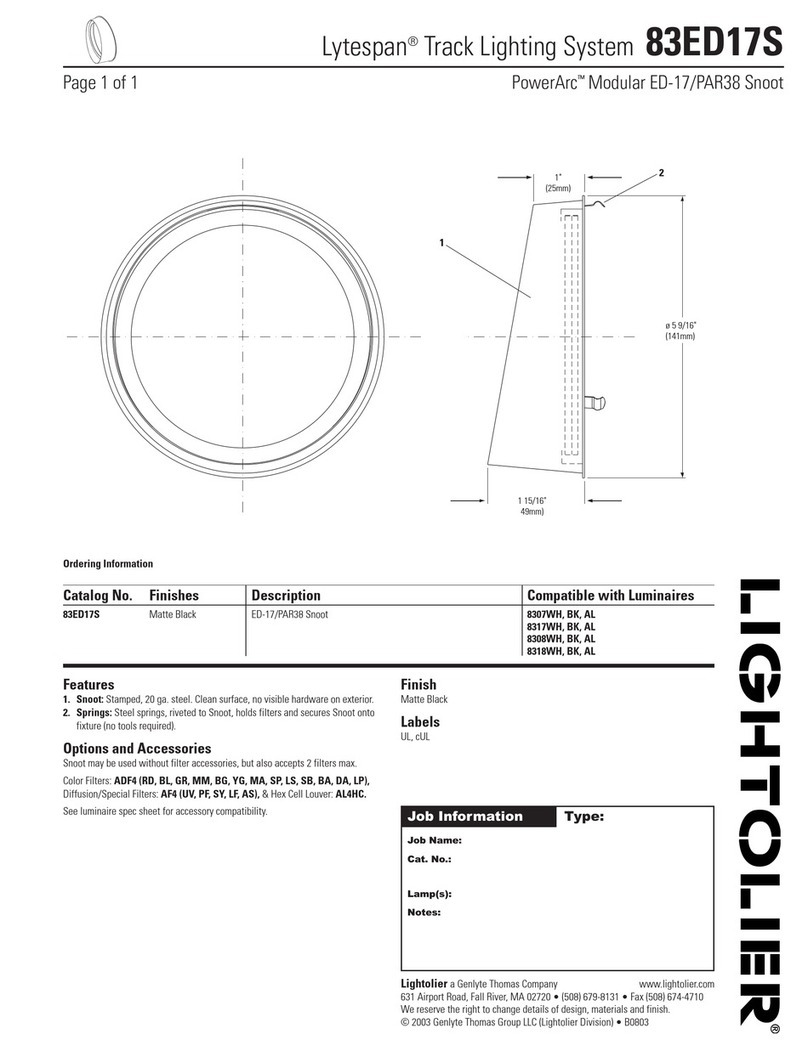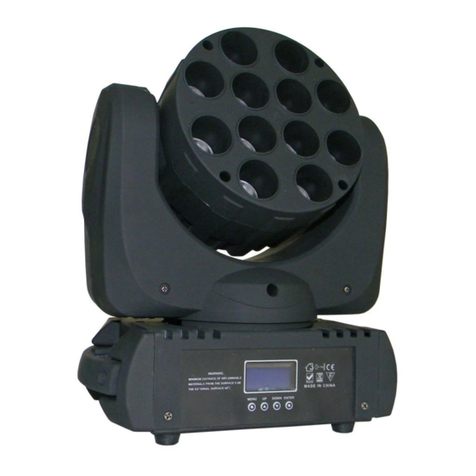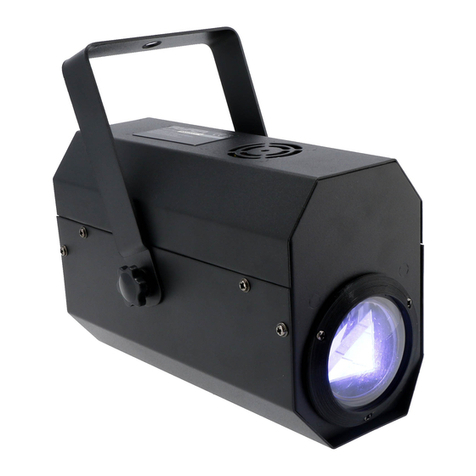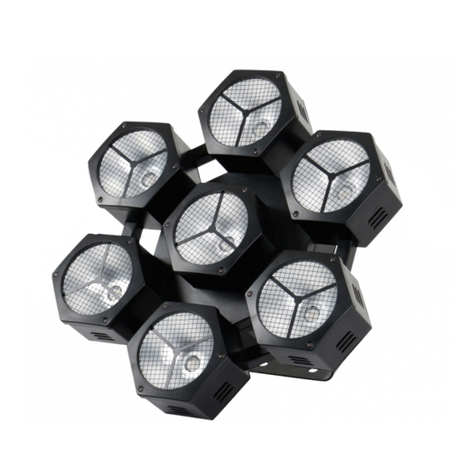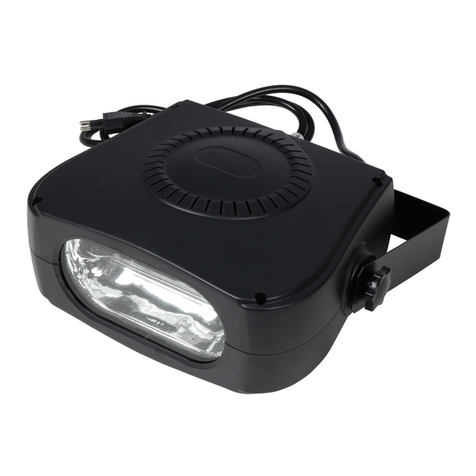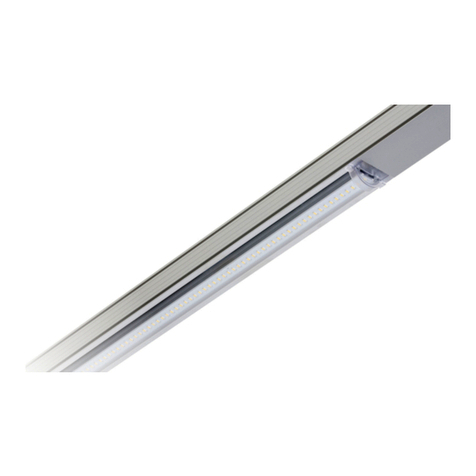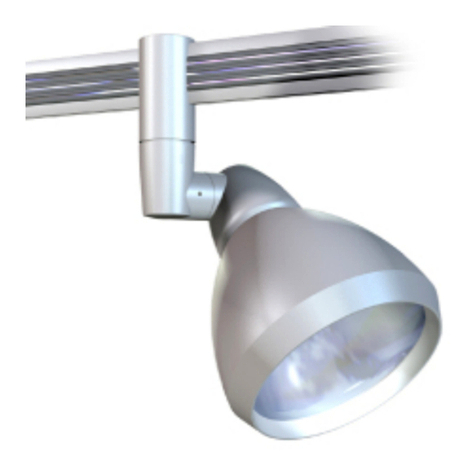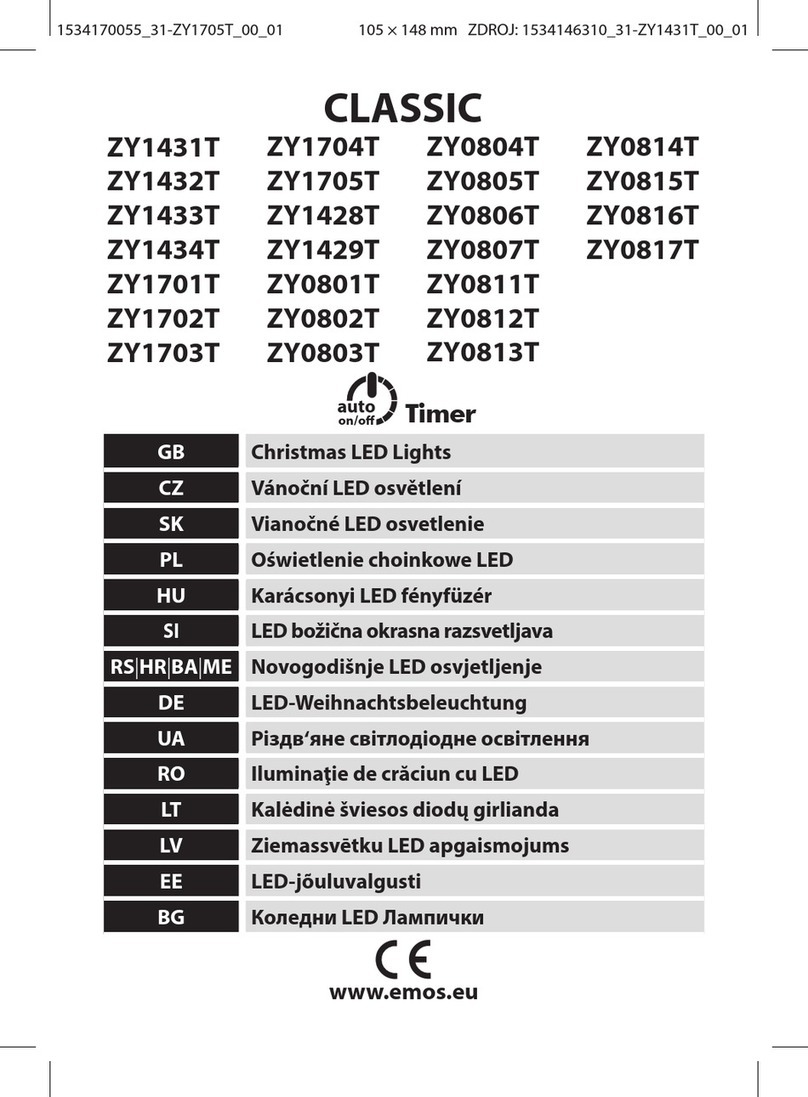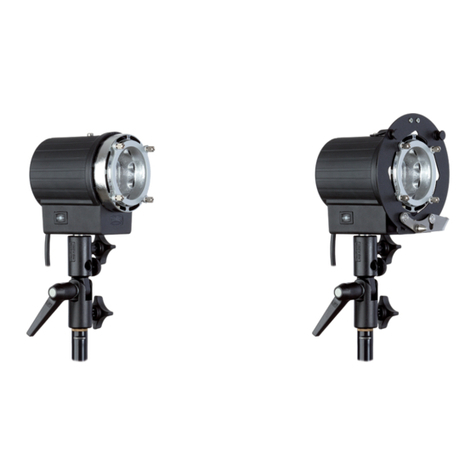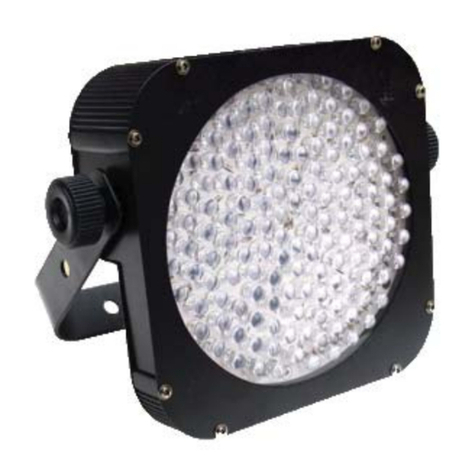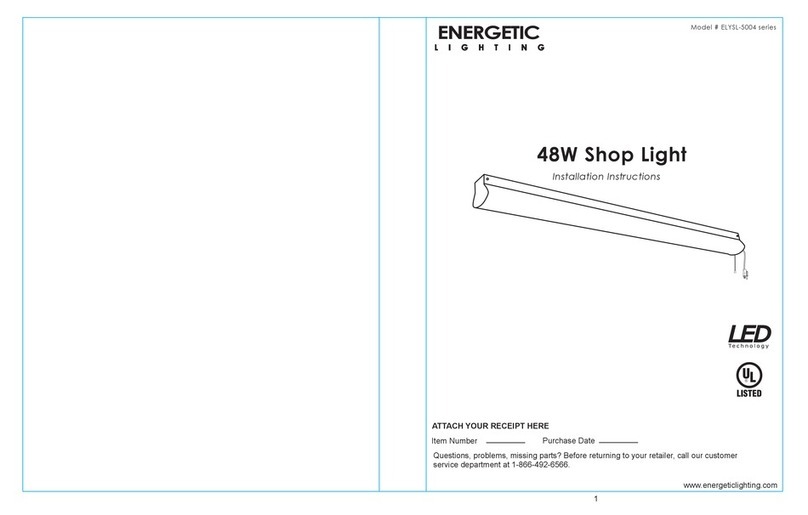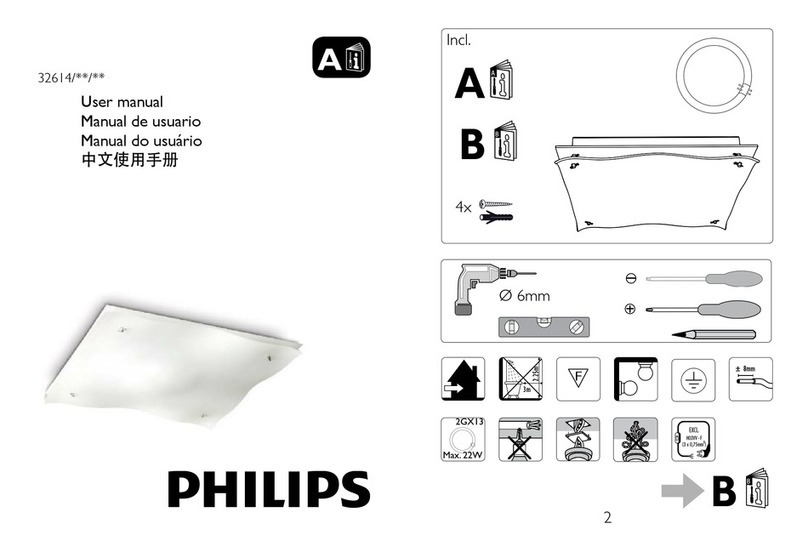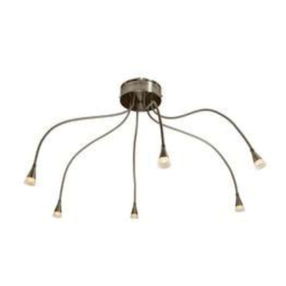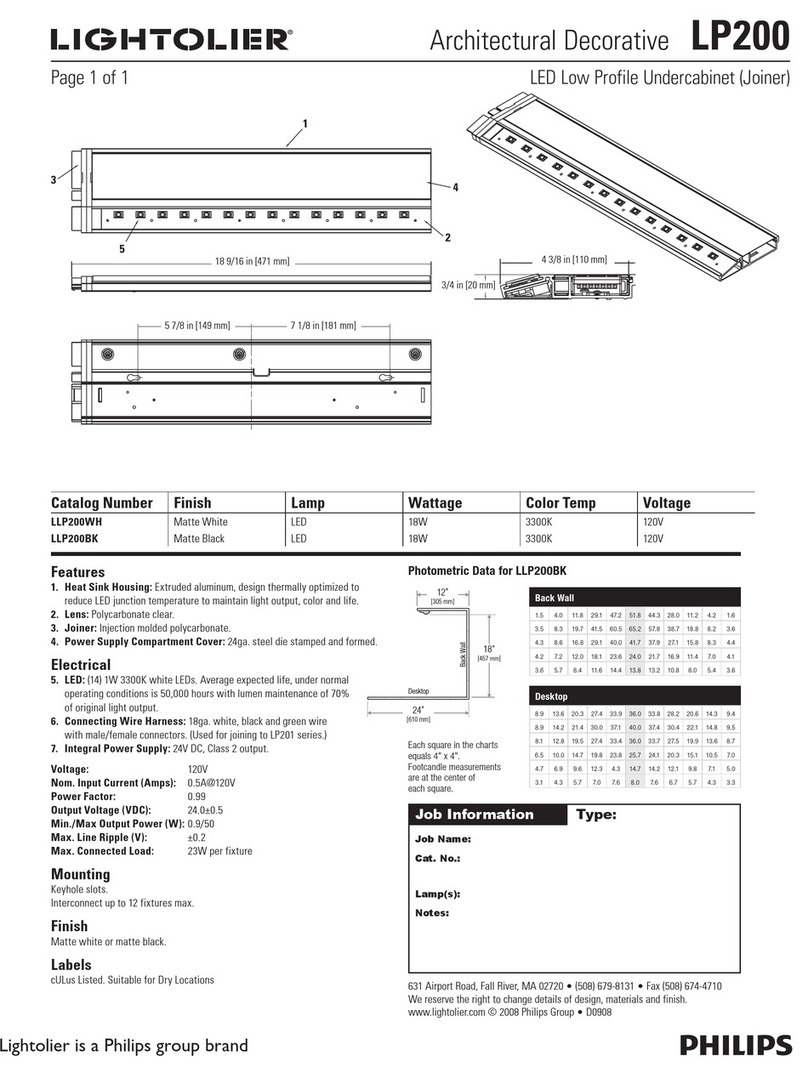An exp anation of a avai ab e functions can be found be ow:
ADDR: With this function, you can determine the DMX start address of the de ice. Set it channel 001, and
the de ice will respond to DMX channel 1. Set it to channel 003, then the de ice will respond to DMX
channel 3 and so on.
CHND: This de ice can operate with arious DMX channel modes. If your DMX circuit is reasonably full with
de ices and you do not need extensi e control o er the functions, a concise channel mode can be selected.
It is also possible to select a more extensi e channel mode, making more channels a ailable for the control
of se eral separate functions.
NASL: Using the Master / Sla e Mode, it’s possible to connect se eral de ices of the same type with one
another, ia DMX 3-pin XLR cables so that they perform exactly the same mo ements and functions at the
same time. Therefore, single de ices do not respond indi idually (or chaotically) and this results in a
completely coordinated show. In the Master / Sla e function, the first de ice in the circuit is set as the Master
and does not recei e DMX signal.
PLEASE NOTE: When Sla e mode is acti ated, the de ice shall wait for a signal from the designated Master
de ice. Selecting an automatic or sound-controlled mode is then not possible! To cancel the Sla e mode,
enter the ‘SLND’ menu and select ‘NAST’. This then sets the de ice to Master mode and the stand-alone
functions can then be acti ated once more.
COLO: Select one of the built-in static colour presets. Then add an optional stroboscope effect.
JUMP: Alternate between di erse colours. One colour preset jumps to the next colour preset in one go. Then
add an optional stroboscope effect.
FADE: Slow colour fade with adjustable speed. One colour blends smoothly into the other. Then add an
optional stroboscope effect.
SOUN: Here, the in-built microphone can be set to On or Off. If the microphone is switched on, the JUMP
and FADE functions will react to the beat of any music.
SENS: This mode allows you to set the sensiti ity of the in-built microphone. The further the de ice is
installed from the sound-source, the higher the sensiti ity of the microphone needs to be so that the sound is
registered and the de ice responds accordingly and in time to the music. The microphone is able to
withstand high sound pressure. Howe er, if the sound is loud and the sensiti ity is high, the microphone will
find it more difficult to register the beat. Experiment with the sensiti ity and distance from the positioning of
the de ice to make sure you’re getting the best possible signal and optimum performance.
BLND: Use this function to set what the de ice will do in the e ent of DMX signal drop-out or loss. When set
to Master mode, the de ice shall start an in-built programme. In the LAST mode, the de ice remains in the
last acti e DMX command recei ed. In the Blackout mode, all settings return to zero and that de ice no
longer mo es or gi es light.
LED: When the LED display is not in use, it can be switched off. By setting ‘LED’ to ‘Off’, this will pre ent red
symbols from illuminating when the de ice is being used in dark spaces. If you press of the menu buttons,
the display shall immediately light up and show all necessary information. If the display is not used, it shall
automatically switch off again within 30 seconds.
DISP: This function is useful when the de ice is suspended and the display screen is upside down. Use this
function to flip the screen so that it can be easily read when the de ice is suspended.
TEST: When the de ice needs to be checked, use the ‘TEST’ function to test one or more de ices at the
same time. The de ice(s) shall continuously runs through a programme within which the LEDs are tested so
that any de iations or defects can be easily detected. The de ice shall continue to repeat the programme
until it is manually interrupted (when you switch the de ice to sound control, for example).
HOUR: If this de ice is used professionally or rented, it should be regularly maintained and inspected in
The information in this user manual is subject to change at any time without notice.
Version: 1.0 Date of creation and author's initials: 07-10-2019 RV Revision date and author's initials: -
